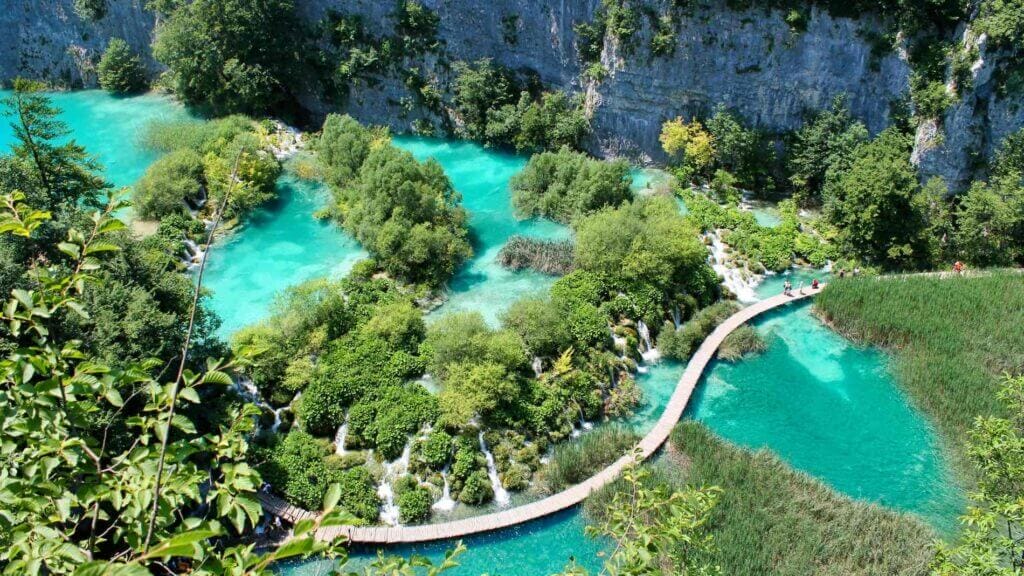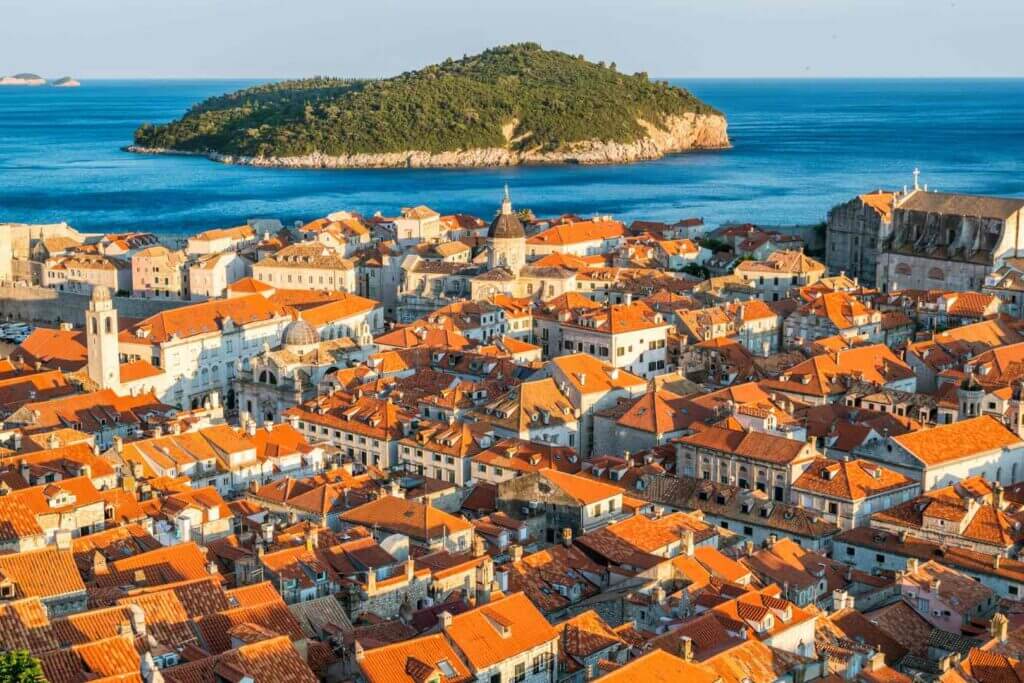Croatia
Natural wonders, ancient landmarks and tantalising cuisine are to be expected on a holiday in Croatia, particularly along the magnificent Istria Peninsula and down the Dalmatian Coast. The picturesque towns and cities are enough by themselves to capture your attention, however this land of thriving culture has museum, galleries and modern festivals aplenty to fill every waking hour.
Water sports as well as hiking and biking trails will satisfy outdoor enthusiasts, and when you want to rest and savour the sunshine along with the sea views, Croatia boasts some incredible beaches in the heart of the social scene and on the most distant isles.
Croatia is home to beautiful coastlines, stunning lakes (Plitvice and Krka) and forests, a fascinating history, fantastic wine, and delicious sea-to-table cuisine.
Below you will find comprehensive guides to the country.

Best Time To Visit

Croatia is a country in the Balkans and its weather is mild.
Like most places in the northern hemisphere, Croatia is generally warm and dry in the summer and cool in the winter, but the climate differs from place to place throughout the country.
The closer you are to the Adriatic Sea, the warmer you’ll be. For example, some of Croatia’s most popular cities such as Dubrovnik, Split, and Zadar, are on the coast, so you can expect a typical Mediterranean climate there. While in the capital, Zagreb, which in inland you can expect snow in the winter but hot summers.
The coldest months of the year are January and February, which have temperatures with highs of 10°С and lows of 2°С. On average, December is the rainiest month, with 80mm of rain and 13 rainy days.
Check out our best time to visit, month by month guide here
What To Expect
Capital: Zagreb
Language: Croatian, but English is very widely spoken. Depending on the region you’re in, you’ll also find many locals speaking German and Italian.
Currency: The currency in Croatia is the Croatian Kuna. $1 USD is equivalent to about 6,80 HRK and £1 GBP is 9.02 HRK. Croatia will adopt the Euro by 2023. Check the latest rates here
Credit Cards & ATMs: ATMs are reliable and found in all of the big cities and most of the small towns. However, charges on foreign cards are expensive, so you’ll want to take a card that doesn’t charge you each time you withdraw. A lot of places also accept Google Pay and Apple Pay.
Plugs: The plugs in Croatia are Type C and F. The standard voltage is 230 V, and the standard frequency is 50Hz I recommend buying a universal adapter as they make everything so much easier.
Safety: Croatia is one of the safest European countries for solo female travellers. Overall crime rates are low and violent crime is rare. However, you’ll will still find pickpockets in crowded tourist areas like Dubrovnik.
Useful tip: Don’t only go to Dubrovnik! Yes Games of Thrones star Dubrovnik is every bit Lord Byron’s ‘Pearl of the Adriatic’, but also tempting on the coast is Split, the country’s second largest city, whose city centre is remarkably a UNESCO site, the spectacular Roman Diocletian’s Palace. Further north the old Roman hub of Zadar and early Croatian city Šibenik are lively hubs just emerging from the bitter 1990s war, where the cafes are less filled with tourists.
Tipping: Tipping in Croatia is 10% of your restaurant bill.
Travel Guides
Below you will find guides on places in Croatia, including the best places to visit, budget tips, and how to’s etc.
Top 5 Things to See and Do in Croatia
(Note: Croatia is brimming with activities. Truly, there’s an abundance to explore and experience. The following are just a few of our top picks. For more country-specific activities, refer to the detailed guides linked to each country below!)
Croatia’s Dalmatian Coast is a sun-kissed stretch of azure seas dotted with idyllic islands, each boasting its unique charm. Setting sail from Split or Dubrovnik, visitors can embark on an island-hopping adventure, exploring the lavender fields of Hvar, the golden sands of Brač, or the ancient forests of Korčula. Each island presents a blend of pristine nature, historical sites, and vibrant local culture. Whether you’re diving into crystal-clear waters, savouring fresh seafood in a coastal tavern, or losing yourself in old town alleyways, the Dalmatian islands promise myriad delights.
Dubrovnik, often referred to as the “Pearl of the Adriatic,” is a city of stunning medieval architecture and rich history. One of the most iconic experiences here is a walk atop the city’s ancient walls. These fortifications, which stretch around the entirety of the old town, offer panoramic views of terracotta rooftops, historic monuments, and the shimmering Adriatic beyond. As you wander the walls, the tales of seafarers, merchants, and old-world intrigues come alive, making it a journey through both space and time.
A UNESCO World Heritage site, Plitvice Lakes National Park is a natural wonderland of cascading waterfalls, crystal-clear lakes, and dense forests. A network of wooden boardwalks and pathways lead visitors through this aquatic tapestry, where 16 terraced lakes flow into each other via stunning waterfalls. Depending on the season, the waters shift from turquoise to green, blue, or even grey, always offering a mesmerising display. While the vistas are breathtaking at any time of the year, autumn’s golden hues or winter’s icy embrace add an extra touch of magic.
The Istrian Peninsula, nestled at the northern part of the Adriatic Sea, is a culinary haven, celebrated for its truffles, olive oils, and wines. Towns like Rovinj and Poreč not only captivate with their Venetian-style architecture but also tantalise the taste buds with gourmet delights. Truffle hunting tours in the Motovun forests, wine-tasting sessions in local vineyards, and seafood feasts in coastal taverns all contribute to an epicurean journey. Istria’s blend of Croatian, Italian, and Slovenian influences ensures a rich tapestry of flavours waiting to be explored.
Split, Croatia’s second-largest city, is built around the remarkable Diocletian’s Palace, an ancient Roman complex that is still vibrant and lived-in today. As you meander through its narrow streets, you’ll stumble upon bustling markets, hidden courtyards, and centuries-old monuments, including the grand Peristyle square and the subterranean vaults. The city’s Riva promenade, lined with palm trees and cafes, is perfect for a leisurely evening stroll, while the nearby Marjan Hill offers sweeping views of the city and sea, encapsulating Split’s harmonious blend of past and present.
Book tours and purchase tickets
Travel Resources
More Ways to Keep in Touch
*Disclosure: Please note that some of the links above may be affiliate links, and at no additional cost to you, I earn a commission if you make a purchase. I only recommend products and companies I use and the income goes to keeping the site community supported and ad free.









